Santa Fe is an unusual city. Out at the fringes, much of it seems like anywhere on any highway, but at the center, where the city first grew around its plaza, everything is adobe, or colored to match, and that's true also of large parts of the city's residential areas.
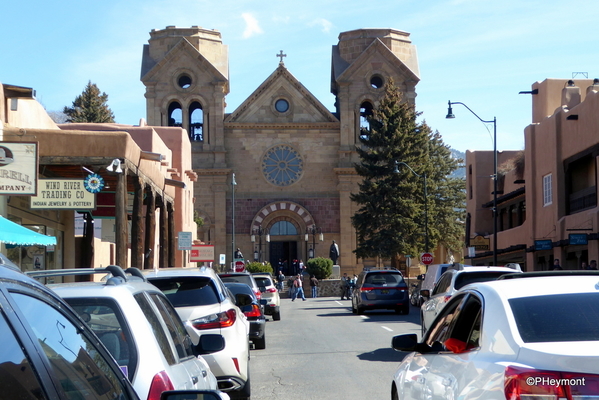
Santa Fe's cathedral is one of few major buildings to escape the adobe.
And it's no accident: in the 1920s and 1930s, the city passed building codes that required all new buildings in the central area to use the "Pueblo revival style" with wooden beams and adobe. The goal was to attract artists and tourists who had been passing the city by on their way to the artistic colony of Taos.
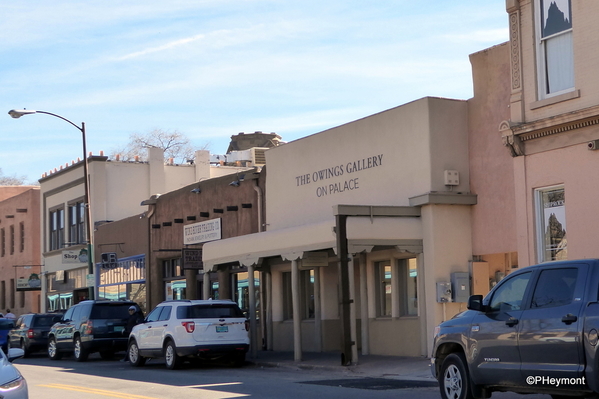
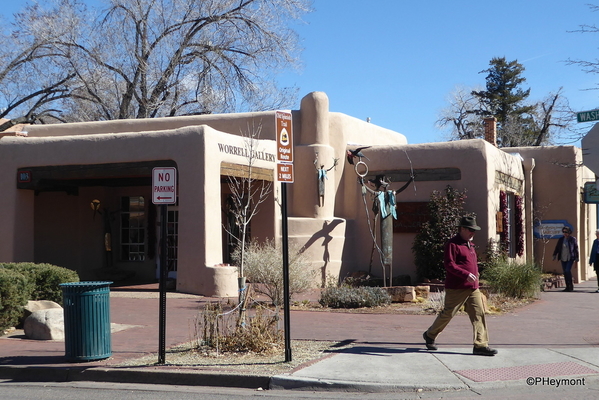
It worked. And the result is an apparently architecturally-unified area with numbers of pleasant-looking buildings, and a few that just plain call for other styles. Because typical Pueblo buildings, and early Spanish colonial ones, were typically one or two stories, it's also created a generally low-to-the-ground appearance.
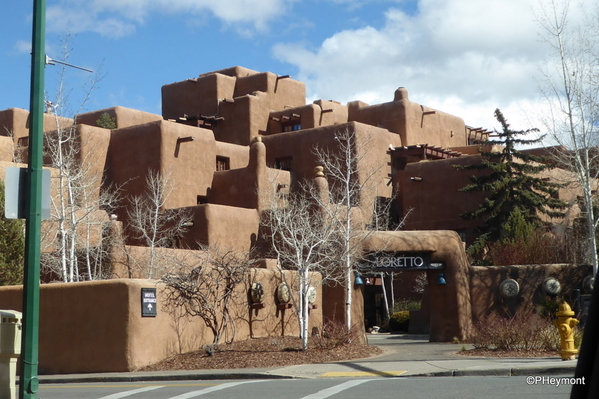
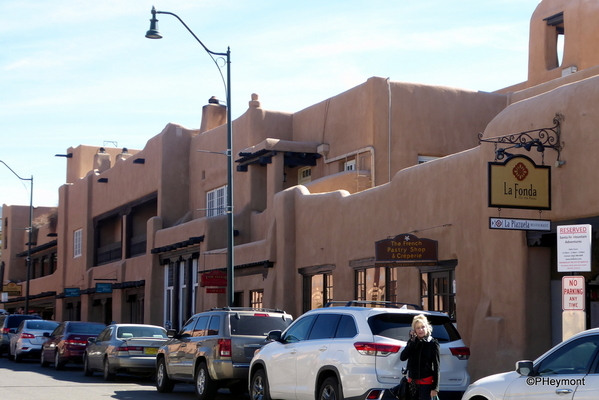
Upper: Loretto Hotel: not really meant for adobe style Lower: La Fonda, a 1920's Harvey House hotel on a site with a 300-year history as an inn.
The references to Pueblo and Spanish origins are to the point in Santa Fe. The city's self-image lays claim to Native American roots, both Pueblo and Navajo, and to the influence of Spanish colonizers, and more recently to American settlers. The fact that all of those were in frequent and ongoing conflict makes for an interesting mix in the telling.
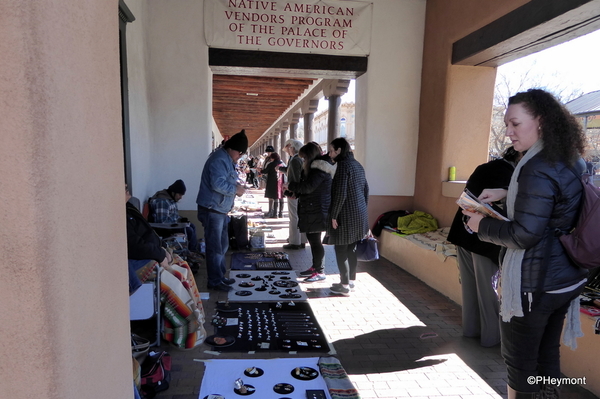
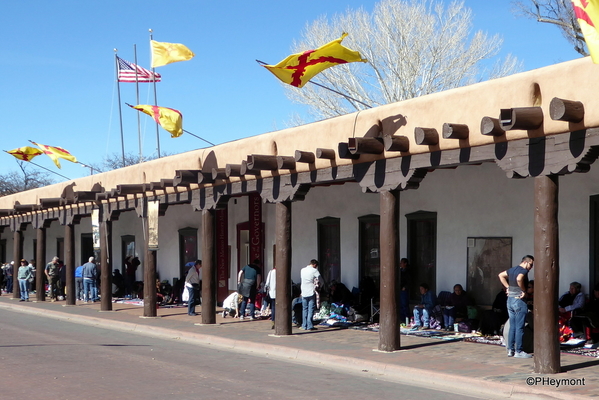
Art is a big theme in Santa Fe, and that, too, has multiple roots and connections. Native American jewelry and crafts, made mostly by people of the different Pueblo tribes and some by Navajos features not only in open-air sales under arcades including the old Governor's Palace, but also in the chic and of course expensive stores and galleries. But many of the galleries also focus on 'Southwestern Art,' which blends western landscape, cowboy themes, Indian references and more.
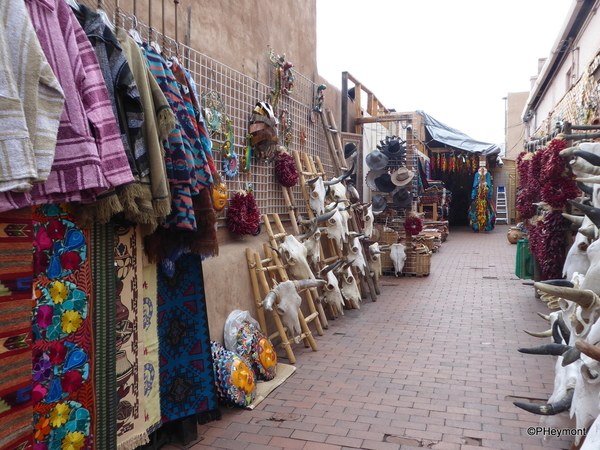
Or, if you prefer cattle skulls to remind you of Georgia O'Keefe...they're available. As is a splendid museum focused on her work, and including a large part of her own collection of her work.
The New Mexico Museum of Art, above, features exhibits and a permanent collection that touch on all these themes, and on some products of their centuries-old mixture. The carousel-like piece by Luis Tapia highlights an annual local carnival that includes elements of Native American and Spanish legend, local traditions including low-rider cars, and more.
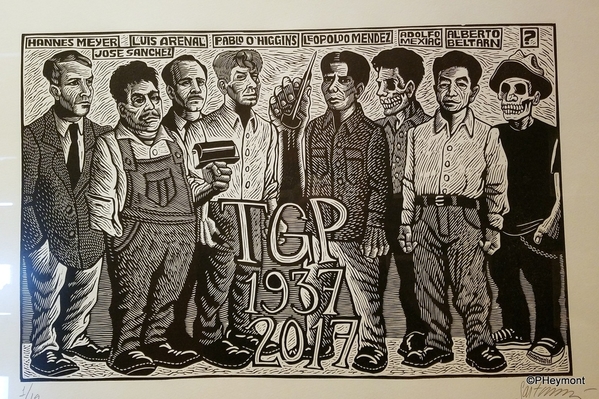 Another piece is part of an anniversary exhibition of the work of radical art workers, mostly Mexican but some from New Mexico, who formed the TGP, or Popular Graphic Art Workshop in the 1930s.
Another piece is part of an anniversary exhibition of the work of radical art workers, mostly Mexican but some from New Mexico, who formed the TGP, or Popular Graphic Art Workshop in the 1930s.
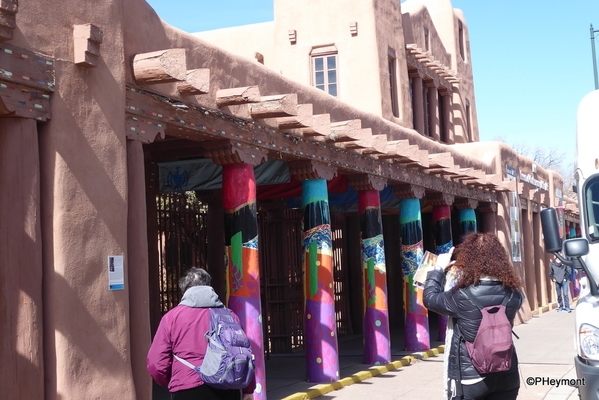
At another end of the art spectrum, we visited a museum with two names, reflecting changing terms and views: the Museum of Contemporary Native Arts is operated by the Institute of American Indian Arts. Or IAIA MoCNA. In any form, it's a museum that features the work of artists with roots in native traditions, but often with either methods or materials that are anything but traditional. It's definitely has more questions than answers for the viewer.

The museum with the most juggling to do, of course, is the New Mexico History Museum. Its main entrance is through the Governor's Palace, which served as the capital of New Mexico from the 17th to the 20th centuries (Yes, Santa Fe is the oldest U.S. state capital), through Spanish rule, Pueblo revolt, Spanish reconquest and eventually U.S. rule.
But while many of the rooms of the old building, which faces the Plaza, are filled with fascinating exhibits and artifacts, the real job of interpretation and broad understanding take place in the large new building that rises on the other side of the Palace's courtyard.
Out on the Plaza, not only the typical center of colonial Spanish towns but built on the site of a native village that was still inhabited when conquistadors became uninvited guests, there are pleasant benches, a monument that carefully explains that we might not be so quick today to honor those honored on it, and strings of peppers, drying in the sun, hanging from trees and lamps. At night, the focus shifts and the lights come on.
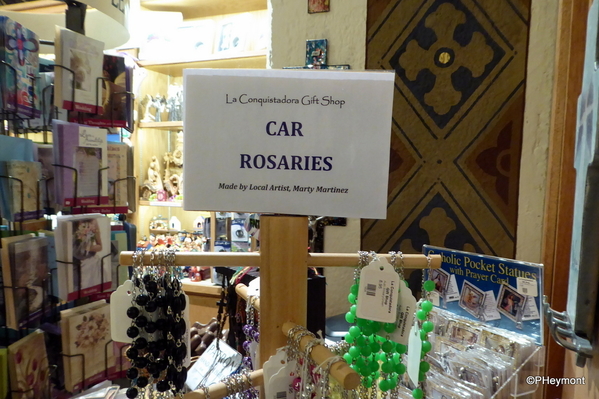
Religion has played a big role in Santa Fe's history; its first church opened almost 400 years ago, and early conflicts included fights over the attempt by Spanish colonizers to wipe out Pueblo religions. A revolt in 1680 drove out the Spanish; when they returned a dozen years later, an uneasy religious truce led to many native elements living side-by-side with, and sometimes inside, the Catholic church. It's certainly a land of many religious symbols. Below, a wall of them in the History Museum. Above, a somewhat tackier display.
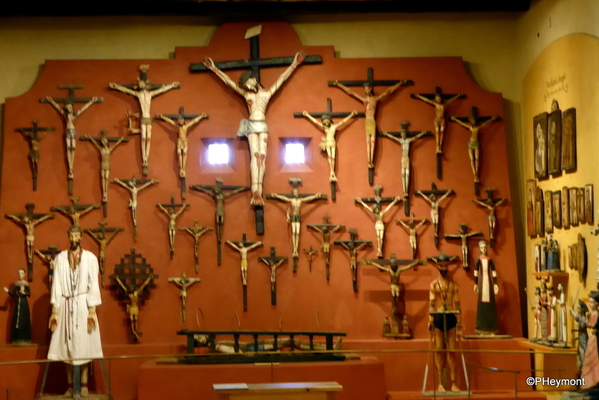
The church in the picture below is the Loretto Chapel, once belonging to an order of nuns and the girls' high school they ran. Eventually the school closed and the chapel fell into disrepair. A deal was struck: the land next to the church was sold to a developer who built the Loretto Hotel; as part of the deal, the hotel became responsible for maintaining the chapel.
The chapel's claim to fame is an unusual spiral staircase, which leads from the floor to the choir loft. Legendarily, and in a TV film, the chapel was built with no way to reach the loft; the nuns prayed for help, and a mysterious carpenter appeared and in solitary silence built the stairs, which are said to lack enough support to exist. The legend claims the carpenter was Saint Joseph.
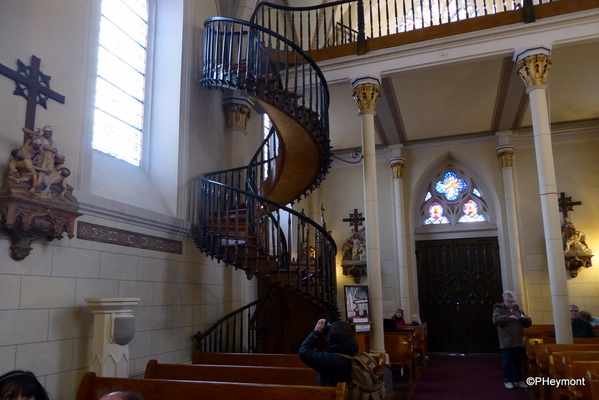
The double-helix stairs are certainly handsome, and look as if they lack support, but careful researchers have pointed out that there is, in fact, both internal and external support in the shape, and that the lack of stairs in the original plan was not all that unusual; a ladder was a frequent way for singers to reach the loft. But, the legend is popular and it's a commercial attraction, so it's unlikely to go away. If you're curious to know more, click HERE

How it looked before a railing was added in the 1890s.
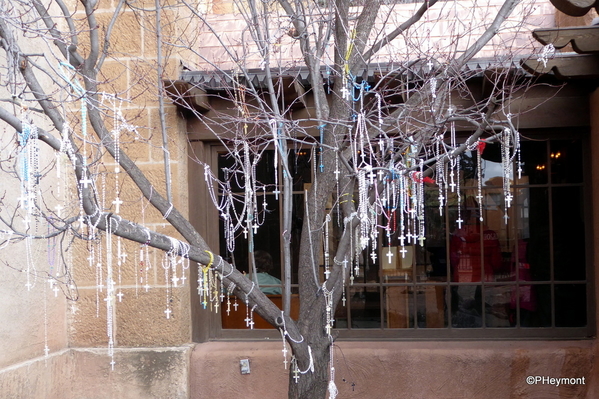
Outside the chapel, another mystery: A tree that apparently induces believers to leave their rosaries behind, draped over the tree.
All taken in all, our taste of Santa Fe, four days in all, left us with much undone: more museums, more parks and historic sites, pueblos to visit, more meals to explore. If you can take the altitude—7,000 feet—it's worth some time!


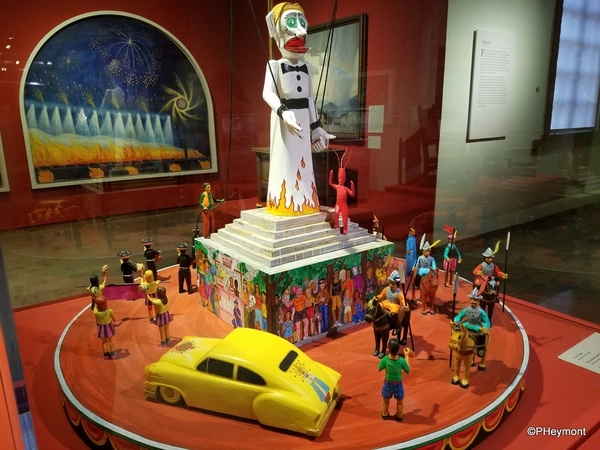
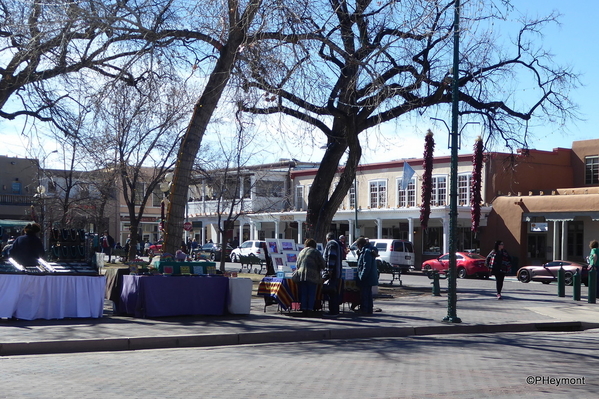

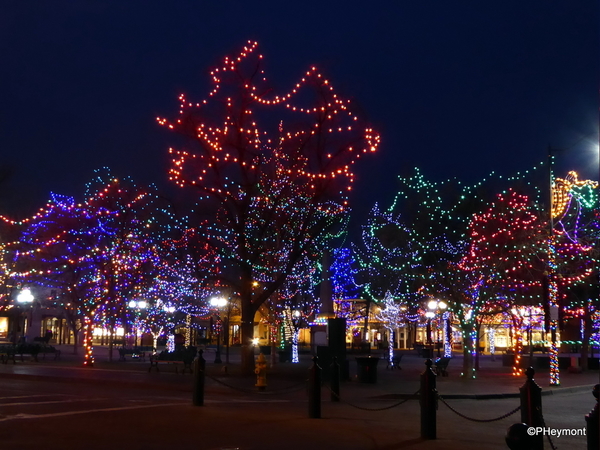
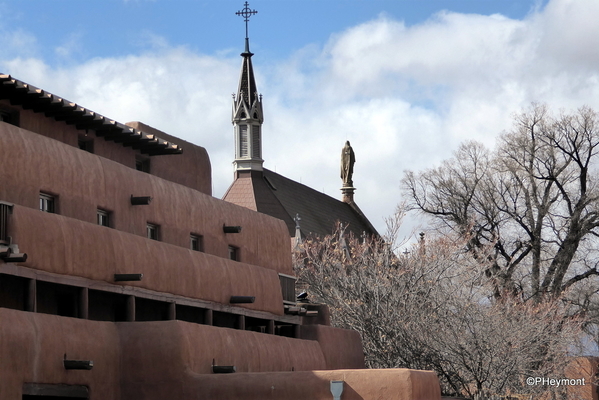
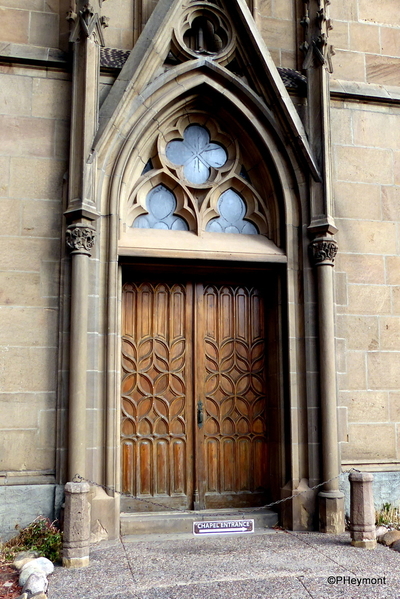

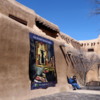








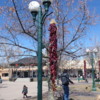


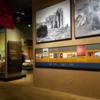




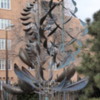


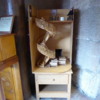

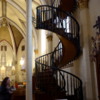
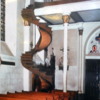


Comments (1)